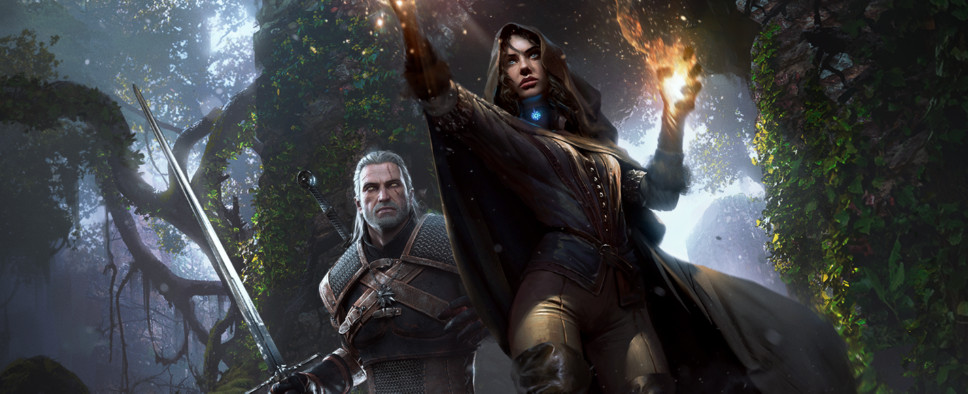The Witcher 3: Wild Hunt Review
-
Category: ReviewsHits: 32939

Article Index
There are a few positive aspects to the way the game handles gear, however. Crafting never overtakes the normal loot progression like it does in other games, but it's still useful due to a few unique items that can be created and/or upgraded. For example, the unique Witcher sets found throughout the game can be upgraded to stay competitive throughout the length of the main storyline. It's a bit laborious, especially considering certain recipes require high-level crafters, but I didn't mind it.
Quest Design and Choices
Quests in The Witcher 3: Wild Hunt are divided in a few categories. Main quests are related to the main story and necessary for its advancement. Secondary quests are quests that might or might not be related to the main story, but that aren't necessary for completing the game (quests linked to important NPCs are part of this category, but so are quests that are completely unrelated to the story). Witcher contracts are paid contracts on particularly strong monsters. There are also some treasure hunts, which I don't think I need to explain.
The main and secondary quests in The Witcher 3: Wild Hunt are designed in more or less the same way quests were designed in The Witcher 2: Assassins of Kings. That's to say that the quests excel at framing, pacing and very often offer interesting choices. Quests usually involve simple detective work and some combat, but often also make use of the game's side activities. They do, however, lack opportunities for the players to really feel clever and approach objectives in a non-obvious way.
For example, an early side quest, Wild at Heart, offers a linear investigation that can be interrupted before its natural end at the suggestion of an NPC, and ends on a moral dilemma. At no point is there any doubt as to how to progress: the game very obviously points what to do to the player, and Geralt draws every conclusion completely by himself. But the rest of the quest more than makes up for this problem: it's a well-narrated tale of love, strife, and dirty secrets, with a proper climax and moral dilemma at the end.
And there are many quests like that in the game, placed organically throughout the vast maps of the game. Taking a monster contract might naturally lead to an encounter with an old friend, for example, though it's perfectly possible to stumble on the situation simply by exploring. All quests are crafted with care, often so much that they could stand as their own short stories. They often feature multiple solutions, interesting dialogue, and a plethora of different activities.
The game's activities are also shuffled in interesting ways that keep the pacing interesting and the various small narratives unpredictable. The timed dialogue mechanic, for example, takes another meaning entirely when you have to decide whether to read from Dandelion's hilariously overwrought cue card or improvise some more realistic bandit dialogue (no, I'm not going to spoil the context). There are even times where a quest's predictable ending might take an unexpected turn and open another, radically different quest.
The Witcher 3 takes great pains to present choices that make sense and follow through with their consequences, though it never matches its predecessor on this front. Most of these consequences come in the form of story content and opened or closed quests, so the end result is that of a personalized narrative rather than a massively transformed experience. The game also offers save imports from The Witcher 2, though it feels mostly inconsequential, and three different playable epilogues that are accompanied by ending slides.
It's all great stuff that capitalizes on the best elements of the series, and the consistency on display is frankly incredibly impressive. After completing the game, my quest log was still full of potential stories to explore, and I can't really think of an actual disappointing quest. This is the mark of a great game, and one of the reasons I'm so impressed with The Witcher 3.
The Open World
The open world was one of the biggest selling points for the game pre-release, so I'm practically obliged to dedicate a few paragraphs to the way CD Projekt RED handled world design and content distribution. First of all, a clarification. The Witcher 3 isn't an open world in the same way The Elder Scrolls games tend to be. The game doesn't feature one contiguous map, but two main, very large areas, and a couple of smaller ones. That said, the various regions themselves work effectively as open-world maps, with all the open exploration we've come to expect.
Each of the regions has its own feel. For example, Skellige is an archipelago with vast mountain ranges. This radically changes how the player traverses the area: going from point A to point B often takes twists and turns, and to go from an island to another you're forced to either use a boat or use fast travel. Incidentally, I'm really pleased with the way The Witcher 3 handles fast travel. Geralt can only fast travel from a signpost to another signpost, provided he discovered it first.

